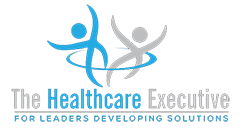Revolutionizing Healthcare with AI-Driven Diagnostics: A 2024 Perspective

Revolutionizing Healthcare with AI-Driven Diagnostics: A 2024 Perspective
Introduction
Artificial Intelligence (AI) has transformed many aspects of healthcare, particularly in the realm of diagnostics. As we move into 2024, healthcare executives are increasingly looking to leverage AI-driven technologies to enhance diagnostic accuracy, speed, and efficiency. This blog discusses how AI can revolutionize healthcare diagnostics and outlines strategic approaches for integrating these technologies effectively.
The Impact of AI on Healthcare Diagnostics
AI technologies, particularly machine learning and deep learning, can analyze complex medical data at unprecedented speeds, often with greater accuracy than human counterparts. AI-driven diagnostics can detect patterns invisible to the human eye, leading to earlier and more accurate detection of diseases, personalized treatment plans, and ultimately, better patient outcomes.
Strategies for Implementing AI-Driven Diagnostics:
-
Invest in Robust AI Systems:
- Deploy state-of-the-art AI diagnostic tools that are validated for clinical use. Invest in systems that integrate seamlessly with existing health IT infrastructure, such as electronic health records (EHRs) and imaging devices.
-
Ensure Quality Training Data:
- Use high-quality, diverse datasets to train AI models. The accuracy of AI diagnostics heavily depends on the data it learns from, making it crucial to use comprehensive and representative data sets.
-
Uphold Ethical Standards and Transparency:
- Address ethical concerns related to AI in healthcare, including patient consent, data privacy, and the explainability of AI decisions. Establish clear guidelines and protocols to ensure that AI tools are used responsibly.
-
Foster Multidisciplinary Collaboration:
- Encourage collaboration between clinicians, data scientists, and AI experts. Such interdisciplinary teams can help develop, fine-tune, and validate AI diagnostic tools, ensuring they meet clinical needs and improve patient care.
-
Prioritize Continuous Learning and Adaptation:
- Implement AI systems capable of continuous learning, allowing them to improve over time based on new data and outcomes. Regular updates and recalibrations will help maintain their accuracy and relevance.
-
Enhance Staff Training and Acceptance:
- Train healthcare staff to work effectively with AI tools. Understanding how AI works and how to interpret its outputs can help clinicians make better-informed decisions and foster greater acceptance of AI technologies.
-
Implement Rigorous Testing and Validation:
- Rigorously test AI diagnostics under various clinical conditions to validate their effectiveness and safety before full-scale implementation. Ongoing monitoring after deployment is also crucial to ensure they continue to perform as expected.
-
Integrate with Telemedicine:
- Combine AI diagnostic tools with telemedicine platforms to extend their benefits to remote or underserved areas, improving access to high-quality diagnostic services.
-
Leverage AI for Predictive Analytics:
- Utilize AI not only for diagnostics but also for predictive analytics to forecast disease progression and response to treatment. This can guide more proactive and personalized care strategies.
-
Promote Regulatory Compliance:
- Navigate the complex regulatory landscape governing AI in healthcare to ensure compliance with all relevant laws and standards, particularly those related to medical devices and patient safety.
Challenges in Implementing AI-Driven Diagnostics:
- High Initial Costs: The cost of implementing advanced AI systems can be prohibitive for some healthcare organizations.
- Data Security and Privacy Concerns: Managing the vast amounts of data used in AI, while ensuring privacy and security, presents significant challenges.
- Integration with Existing Healthcare Systems: Integrating AI tools with legacy healthcare systems and workflows can be complex and time-consuming.
Conclusion
AI-driven diagnostics represent a significant advancement in healthcare technology, offering the potential to greatly enhance diagnostic accuracy and efficiency. By strategically implementing these technologies, healthcare executives can revolutionize diagnostic processes and dramatically improve patient care outcomes in 2024.
Call to Action
Healthcare leaders should consider how AI can be integrated into their diagnostic services and begin laying the groundwork for its adoption, including investing in technology, training staff, and setting ethical guidelines. Collaboration with technology providers and regulatory bodies will also be key to successfully navigating this transformative journey.



